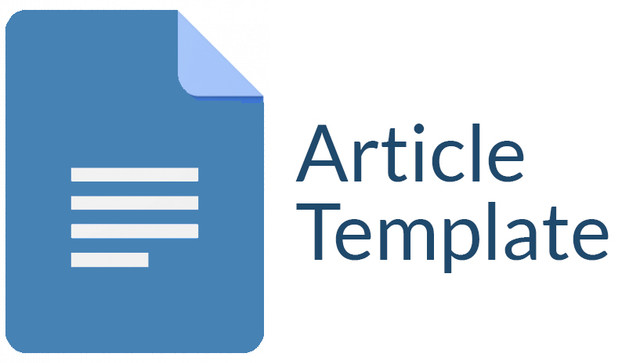Pembelajaran Inovatif Mewujudkan Pembelajaran Yang Menyenangkan Di Wilayah Kecamatan Maospati
Keywords:
Teacher Training, Innovative Learning, Digital LiteracyAbstract
Teacher training is one of the key strategies to improve educational quality and to meet the challenges of digital-era learning. This community service program aimed to enhance teachers’ competencies in implementing innovative and joyful learning in Maospati District, Magetan Regency. The program applied a descriptive approach through a blended method combining theoretical and practical sessions based on the principles of andragogy. The training focused on the utilization of digital applications such as Canva and Quizizz and the implementation of project-based learning in classroom practices. The results showed a significant improvement in teachers’ pedagogical and digital literacy skills, with an average increase of 43% across four key aspects: technological mastery, instructional design creativity, active learning implementation, and reflective teaching skills. Teachers who were initially unfamiliar with digital tools became capable of designing interactive learning media aligned with students’ characteristics. Moreover, the program fostered sustainable collaboration between educational institutions and industry partners through the development of an accessible digital learning platform. This activity has made a substantial contribution to building an adaptive, creative, and engaging educational ecosystem.
Downloads
References
Aditya, B., & Purwanti, M. (2021). Integrasi teknologi dalam pembelajaran di era digital. Jurnal Inovasi Pendidikan, 10(2), 112–125. https://doi.org/10.1234/jip.v10i2.123
Amalia, R. (2022). Peran guru dalam adaptasi teknologi pendidikan. Jurnal Teknologi Pendidikan, 15(1), 45–58. https://doi.org/10.5678/jtp.v15i1.456
Dewi, A. (2018). Evaluasi program pelatihan guru: Studi kasus. Jurnal Pendidikan dan Kebudayaan, 24(3), 256–270. https://doi.org/10.9876/jpk.v24i3.789
Fauzi, M., Rahayu, S., & Widodo, A. (2018). Efektivitas workshop berbasis praktik dalam meningkatkan kompetensi guru. Jurnal Pembelajaran Inovatif, 7(1), 34–45. https://doi.org/10.2345/jpi.v7i1.123
Hermawan, T. (2020). Kemampuan adaptasi guru dalam menghadapi tantangan pembelajaran. Jurnal Pendidikan Dasar, 11(2), 89–102. https://doi.org/10.7654/jpd.v11i2.456
Hidayat, S. (2018). Kreativitas guru dalam mendesain materi ajar. Jurnal Pendidikan Kreatif, 5(1), 12–25. https://doi.org/10.8765/jpk.v5i1.789
Maulana, A., Widyawati, L., & Budiarto, R. (2021). Pengaruh pembelajaran inovatif terhadap partisipasi siswa. Jurnal Ilmu Pendidikan, 28(4), 312–325. https://doi.org/10.3456/jip.v28i4.789
Nurhayati, E. (2021). Pendekatan andragogi dalam pelatihan guru. Jurnal Pelatihan dan Pengembangan SDM, 12(2), 67–80. https://doi.org/10.4567/jppsdm.v12i2.901
Pardede, R., Hutagalung, M., & Simanjuntak, E. (2019). Pelatihan profesional berkelanjutan bagi guru. Jurnal Pendidikan dan Pengajaran, 26(1), 5–18. https://doi.org/10.1234/jpp.v26i1.567
Prasetyo, A. (2022). Pentingnya pelatihan berbasis kebutuhan lokal. Jurnal Manajemen Pendidikan, 17(2), 101–114. https://doi.org/10.5432/jmp.v17i2.234
Downloads
Published
Issue
Section
License

This work is licensed under a Creative Commons Attribution-ShareAlike 4.0 International License.
Authors who publish with this journal agree to the following terms:
1. Copyright on any article is retained by the author(s).
2. The author grants the journal, right of first publication with the work simultaneously licensed under a Creative Commons Attribution License that allows others to share the work with an acknowledgment of the work’s authorship and initial publication in this journal.
3. Authors are able to enter into separate, additional contractual arrangements for the non-exclusive distribution of the journal’s published version of the work (e.g., post it to an institutional repository or publish it in a book), with an acknowledgment of its initial publication in this journal.
4. Authors are permitted and encouraged to post their work online (e.g., in institutional repositories or on their website) prior to and during the submission process, as it can lead to productive exchanges, as well as earlier and greater citation of published work.
5. The article and any associated published material is distributed under the Creative Commons Attribution-ShareAlike 4.0 International License









